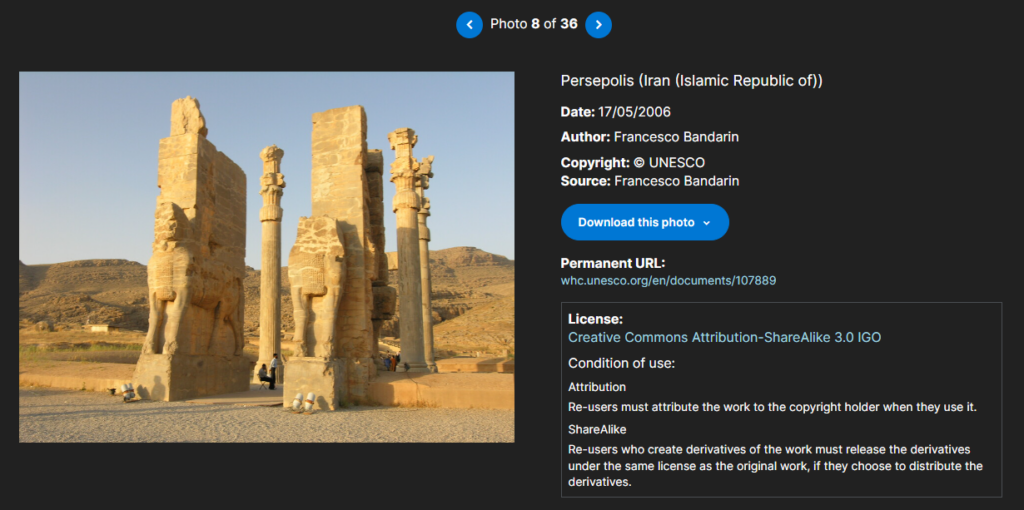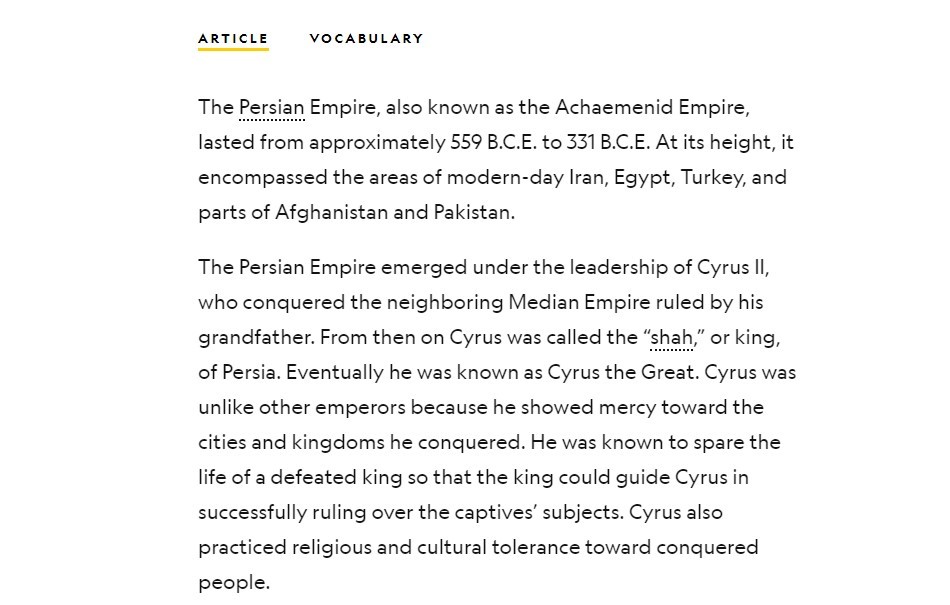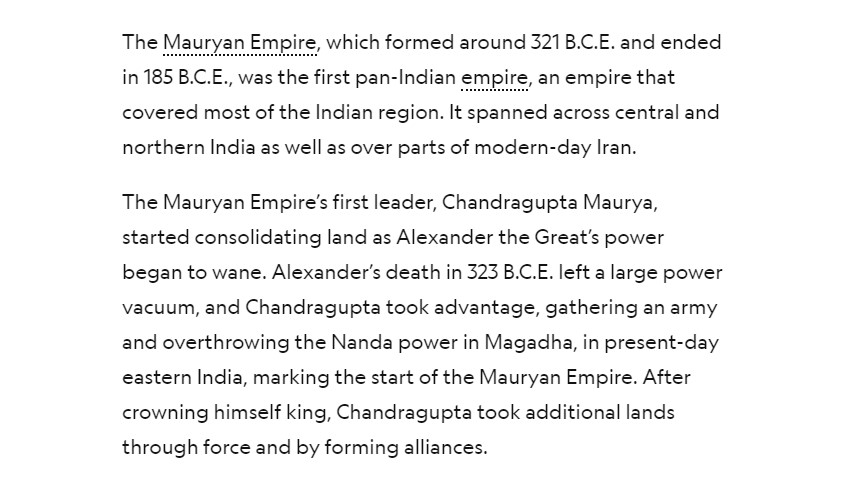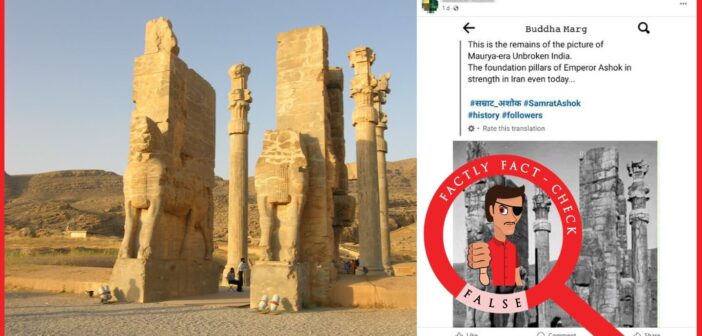A viral image featuring stone columns claims that they represent the foundation pillars laid by the Mauryan emperor Ashoka in Iran. The claim suggests that the image depicts remnants of their reign. This article aims to fact-check the claim presented in the post.

Claim: Image featuring stone columns representing the foundation pillars laid by the Mauryan emperor Ashoka in Iran.
Fact: The image showcases the relics of Persepolis in Iran, constructed during the Achaemenid Empire. Persepolis was founded by Darius I in 518 B.C., and its architectural design drew inspiration from Mesopotamian models. On the other hand, the Mauryan Empire emerged in India around 321 B.C.E., long after the end of the Achaemenid Empire. Therefore, it is highly improbable that the architectural style of the stone columns depicted in the image was influenced by the Mauryan Empire. Hence, the claim made in the post is FALSE.
The image featuring stone columns indeed shows relics in Iran. However, these architectural monuments were not built by emperor Ashoka or the Mauryan Empire but built during the Achaemenid Empire. A reverse image search of the viral photo led us to the UNESCO portal featuring the world heritage sites. The portal features images identical to the images of the viral structure.

The accompanying description of the image indicates that the stone columns are situated in Persepolis, reflecting the architectural style of the Achaemenid Empire. Historical records indicate that the Achaemenid Empire reigned from 550 to 330 BC. Persepolis was established by Darius I in 518 BC and served as the capital of the Achaemenid Empire. It is noteworthy that the architectural design of the Achaemenid Empire drew inspiration from Mesopotamian models.
The Persian Empire started to falter during the rule of Darius’s son, Xerxes, and was ultimately conquered by Alexander in 334 B.C.E. This indicates that the architectural style of the stone columns depicted in the viral image isn’t influenced by the Mauryan Empire, which emerged in India around 321 B.C.E., long after the end of the Achaemenid Empire.

While the Mauryan Empire extended into portions of modern-day Iran, their westward expansion commenced as the power of Alexander the Great began to decline. Chandragupta Maurya, the inaugural leader of the Mauryan Empire, initiated the consolidation of territories following Alexander’s demise in 323 B.C.E.

Moreover, the same viral image is being claimed to depict the Ashoka pillars; however, this assertion has also proven unfounded. Ashoka, the third Mauryan Emperor of Magadha, reigned from 304 to 232 BCE, which was much after the end of the Achaemenid Empire. It is improbable that the architectural style of the Achaemenid Empire was influenced by him.
To sum it up, the photo of this relic situated in Iran shows no influence from emperor Ashoka or the Mauryan Empire.



